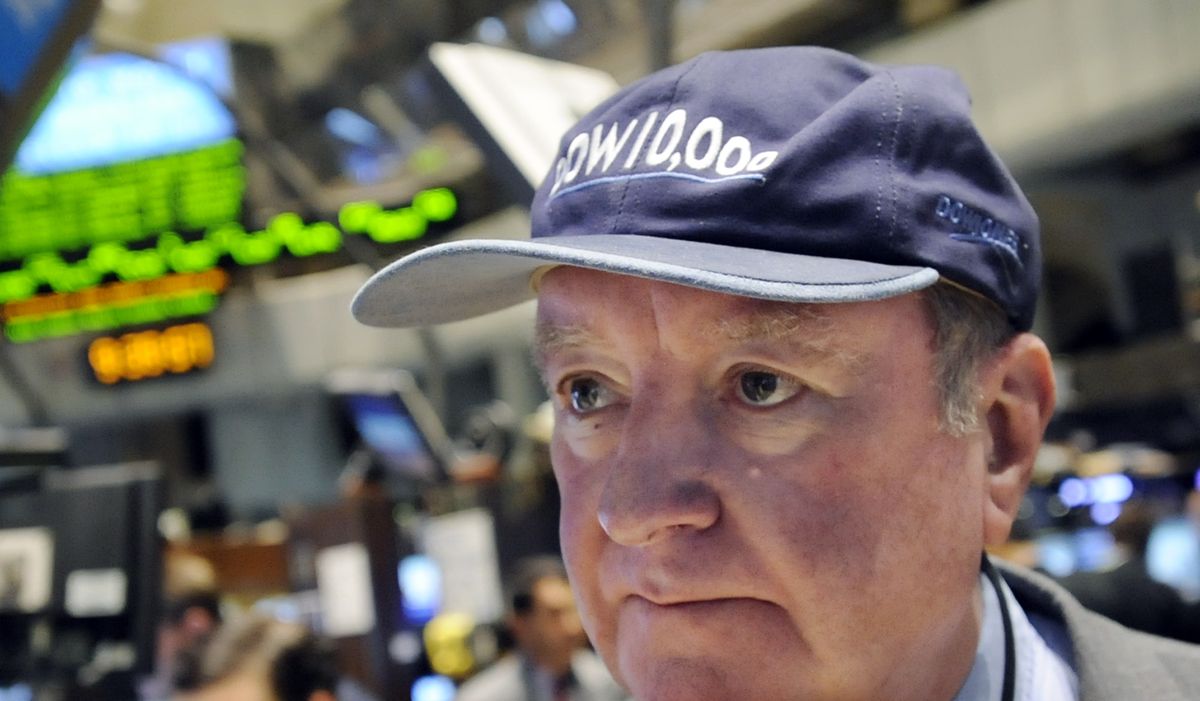Digging into the Dow
Wall Street benchmark gets lots of attention, but many don’t really know what it is

NEW YORK – Amid weeks of stock market turmoil, many worried investors have been tracking the daily trajectory of the Dow Jones industrial average like never before.
But few understand how the index of 30 of the biggest U.S. companies is calculated – or what the closely watched measure of stock market performance really means.
Here are some questions and answers about the world’s most famous stock index.
Q. Exactly what is the stock market’s Dow Jones industrial average?
A. The Dow, the oldest continuing U.S. market index, is a way of measuring the combined stock values of 30 big U.S. companies.
It started out with 12 components, including now-defunct companies like U.S. Leather Co. and Tennessee Coal, Iron and Railroad Co. The only original component still around is General Electric Co.
These days, the index has expanded to reflect the U.S. economy’s move away from big industrial companies. Staples of the modern Dow include big financial companies like Citigroup Inc., technology bellwether IBM Corp. and drug manufacturer Pfizer Inc.
Q. What is the method behind the math to calculate the Dow’s daily rise or fall?
A. Charles Dow, who launched the index in 1896, originally just took the price of one share of each company’s stock, added the numbers up and divided by the number of companies. The average when the index launched was 40.94 – a quaint little number compared with Monday’s close of 9,387.61, or the Dow’s record high of 14,165.43 on Oct. 9, 2007.
Today, Dow Jones & Co. has come up with a mathematical formula to adjust for things like stock splits – when a company doubles the number of stocks its shareholders have, splitting the price of each in half – or new companies being added or removed. The idea is to keep the index consistent over time, and to make sure today’s value can be compared in a meaningful way to what it was a year ago or 10 years ago.
This can be done various ways mathematically, but at Dow Jones it is handled by changing the “divisor” – a number that is divided into the total of the stock prices. That divisor currently stands at 0.122820114.
Q. How does the index account for the fact some components are bigger than others?
A. The index is what’s called a “price-weighted average,” meaning expensive stocks have more influence over the number than lower-priced ones do. This is the case because the index is based purely on the dollar value of stocks; if a high-priced share goes up 20 percent, that’s a greater dollar increase than a cheaper share’s 20 percent jump.
For example, a sharp drop in the price of General Motors last week didn’t have a huge effect on the Dow because the automaker’s stock was already so low. The stock fell $2.15, or 31 percent, on Thursday but only lowered the Dow by 17.1 points. GM’s drag wasn’t all that noticeable on a day when the Dow plunged 679 points.
Q. Is the Dow considered a good measure of how the nation’s companies are generally faring in the stock market?
A. Yes and no. Some on Wall Street downplay the importance of the average because it isn’t as broad a measure as counterparts like the Standard & Poor’s 500 index, which reflects the performance of 500 companies’ stocks.
Still, the Dow is the granddaddy of U.S. market indexes, and it offers a relatively easy-to-understand snapshot of how the market is faring. Analysts generally believe it is a useful tool when combined with other market indicators, including the S&P 500 and the Nasdaq composite, an index of shares on the tech-heavy Nasdaq stock market.
Q. Which companies make up the 30 members of the index?
A. The companies are: 3M, Alcoa, American Express, AT&T, Bank of America, Boeing, Caterpillar, Chevron, Citigroup, Coca-Cola, DuPont, ExxonMobil, General Electric, General Motors, Hewlett-Packard, Home Depot, Intel, IBM, Johnson & Johnson, JPMorgan Chase, Kraft Foods, McDonald’s, Merck, Microsoft, Pfizer, Procter & Gamble, United Technologies, Verizon Communications, Wal-Mart and Walt Disney.